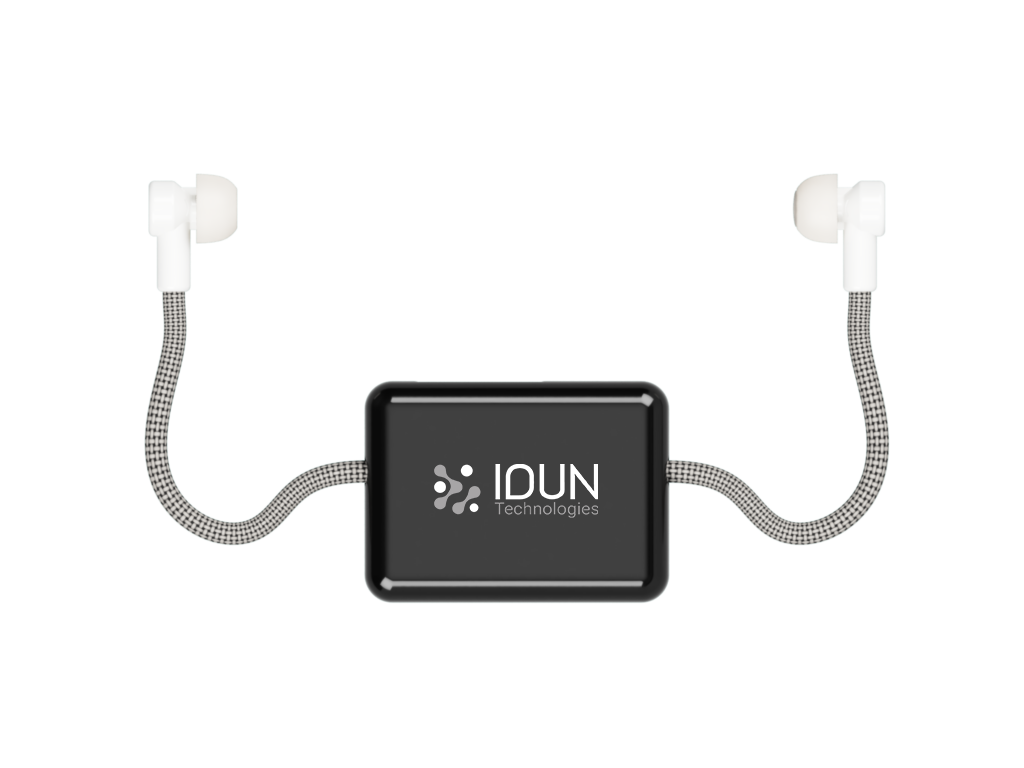Neuromarkers Part 1: What Are They and How Do We Use Them at IDUN?
In this series, our Neuroscience Lead Michel Wälti will guide you through the world of neuromarkers, which are at the core of what we do at IDUN. Today’s post covers the history of neuromarkers, and teases the markers we are currently validating.
If you want to learn more, or want us to cover a specific topic, then reach out today!
Neuromarkers are the very foundation of what we do at IDUN and without fully understanding and utilizing our learnings from them, the Guardian would just simply be a cool pair of ear buds. But what exactly are neuromarkers and how do we use them on a day-to-day basis?
Simply put, a neuromarker is a biological activation pattern produced by the brain. We can detect these neuromarkers with the help of electroencephalography (EEG) which records electrical signals from the brain and visualises the oscillations we all recognise today as brain waves. With this data, neuroscientists such as myself can interpret the signals and deduce what an individual is doing, perceiving, feeling, and – at least to a certain degree – thinking. This can include seemingly small actions such as someone closing their eyes, but it can also help detect complex activity such as REM sleep and neurological disorders.
Simply put, a neuromarker is a biological activation pattern produced by the brain.
The first EEG recording from humans was created by German psychiatrist Hans Berger in 1924 during an operation on a 17-year-old boy. His experiments went further when he met Patient K, a man with a cranial injury that left part of his brain exposed and accessible. Berger used a liquid filled tube and a latex cap to create a pressurised seal over the hole in the Patient K’s skull and attached a pen that drew on a rotating drum of paper. Berger then asked his subject to perform different tasks and noticed that the pen began drawing the waves depending on the cognitive activity involved in the action.
We have thankfully come a long way since Berger’s experiments a century ago and we now do most of our neuroscientific research digitally with the use of electrodes, amplifiers, skull caps and computer programmes that interpret and display EEG signals for scientist to analyse in a variety of fields. Clinicians and researchers now conduct EEG recordings on a daily basis to investigate the underlying mechanisms human brain functions and to diagnose neurological disorders. At the moment, this research requires complex equipment and visits to clinics to see specialists, but we are beginning to make progress away from clinical environments by simplifying the technology towards mobile EEG systems and making EEG-enabled consumer technology a reality.

At IDUN, we see a future where the wearable technology we use every day takes the next step and is improved exponentially through the integration of brain activity and thus, the use of existing and novel neuromarkers, however there is a lot of work still to do. Our Guardian device uses only four channels, located on two ear buds, meaning there are limits to what we can record. However, we have strong evidence for the potential of in-ear EEG in various applications and are pushing to discover how much is possible with the Guardian in terms of neuromarker detection.
In this series of blog posts, I will describe our journey for you as we look at neuromarkers such as alpha waves, EEG patterns characteristic for sleep stages, and sensory evoked potentials in an attempt to validate our Guardian system in comparison to the gold standard techniques and devices. I hope you join us on the way as we explore the ability of the Guardian to detect these neuromarkers and allow everyone access to their brains!
Learn more about IDUN Technologies, our efforts to build the Internet of Humans or join us by going to our website, following us on LinkedIn and Twitter or emailing us at contact@iduntechnologies.com.

Michel Wälti
With a research background in Psychology and a PhD in Neuroscience I am the expert at IDUN when it comes to the fascinating processes of our brains. I know what it takes to conduct scientific research to validate our innovative technology and to explore the potential of truly disruptive digital health solutions. I am leading the Neuroscience department at IDUN and help shape our advancements in Neurotechnology. My passion for exciting new technologies (e.g. mobile EEG and VR) as well as hands-on experience in machine learning and artificial intelligence help me to work closely with our Hardware, Software, and Data Science departments.
us on our socials!
Where to find us
We are located in the outskirts of Zurich, near the airport. We always welcome drop-in visits!
Get in touch
Error: Contact form not found.
